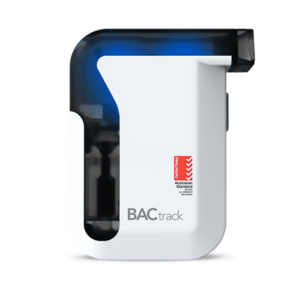
Alcohol and drug impairment increases safety risks drastically. There are many reports of workers with alcohol in their systems being involved in workplace accidents. It has resulted in serious injuries, expensive healthcare costs, and property damage. Likewise, accidents can also slow down productivity and cause other employees to feel unsafe. Thus, establishing a workplace policy is critical for protecting the well-being of employees. While it is only mandatory in safety-regulated industries, many companies implement alcohol and drug testing to manage safety risks. With the prevalence of workplace testing, many employees ask: Can alcohol in a drug test for employment get detected?
Alcohol consumption in Australia is a common pastime activity for many people. Moderate intake helps many workers unwind and relax after work hours. However, sometimes people consume alcohol more than the recommended amount of drinks, putting them at risk when driving or working. Additionally, a high alcohol concentration severely can impair the senses, perception, and coordination. Consequently, companies introducing alcohol or drug tests make many employees anxious. Can you detect alcohol in a drug test for employment? Typically, a drug test does not include alcohol. However, some employers choose to cover alcohol during the screening because it is commonly consumed. Therefore, many companies would often include a breath analyser test during workplace testing. Employers can check for Blood Alcohol Content (BAC) with a workplace breathalyser from Breathalysers Australia.
Can Alcohol in Drug Test for Employment get Detected?
Alcohol or drug impairment is a serious safety hazard. Workplace testing aims to check the worker’s physical condition to ensure they are fit to perform the tasks safely. Many companies perform alcohol and drug screening separately. The standard method for alcohol screening is a breath test. Workplaces or testing agencies use a professional breathalyser like BACtrack to estimate the BAC level from a sample breath. In some instances, an employer may include alcohol in a drug test for employment to perform one procedure only. Moreover, a standard drug test can detect common illicit substances like:
- Amphetamines
- Cannabis
- Cocaine
- Opioids
- Barbiturates
- Benzodiazepines
- Phencyclidine (PCP)
- Methaqualone
- Methadone
- Propoxyphene

Alcohol in Drug Test for Employment Procedures
How can alcohol in a drug test for employment get detected? Alcohol is a volatile substance that readily vaporises once ingested into the body. From the stomach, alcohol pass through the small intestines and the bloodstream. The blood carries alcohol molecules to different body parts, where they stay for a definite period. Moreover, alcohol remains in vital organs where they have adverse effects. In particular, alcohol enters the lungs, heart, kidneys, hair follicles, and fingernails. Thus, getting different biological samples can detect alcohol. Workplaces can perform several procedures to determine substance impairment. The common tests are:
- Breath (Alcohol) – Measures the BAC level through a breathalyser device like BACtrack. Breathalysers can detect alcohol for 12 to 24 hours from the last consumption.
- Urine (Alcohol and drugs) – Urine analysis can trace alcohol for 24 to 48 hours. Advanced tests like EtG/EtS can detect alcohol for up to 80 hours. A urine test is the standard procedure for drug screening.
- Blood (Alcohol and drugs) – The most accurate and invasive test of all. It can identify alcohol presence for six hours from the last intake. Blood tests are suitable and are used to confirm the results from preliminary screenings.
- Oral fluid (Alcohol and drugs) – Saliva or oral fluids can contain alcohol for 12 to 24 hours. It is convenient if a facility for urine is not available.
- Hair follicle (Alcohol and drugs) – A hair sample test can detect alcohol or drugs for 90 days. It is suitable to determine past substance usage.
When do Workplaces Perform Alcohol in Drug Test for Employment
Companies administer alcohol and drug testing through a workplace program to minimise occupational hazards. The policy enables employers to execute an alcohol and drug test within reasonable grounds for safety. As an employee, you can be subject to workplace testing if it is part of the employment agreement. Moreover, high-risk industries implement a zero-tolerance policy on alcohol, drugs, and other impairing substances. Checking for alcohol in a drug test for employment can help hire a suitable candidate for a high-risk position. Pre-employment tests are common to determine if an individual has a substance use history or behaviour that may affect workplace safety. Another key area for workplace testing is to check if substance use or violation of safety protocols led to an accident (post-accident/incident workplace testing). Lastly, employers would also test employees that are suspiciously showing signs of intoxication.

Benefits of Employment Testing
Checking the employees’ conditions is vital towards ensuring the workplace is a safe and healthy zone. A stable workforce results in optimal work performance. Additionally, employees perform better if they feel they are in a secured space. Therefore, testing for alcohol in a drug test for employment can help deter the misuse of alcohol, resulting in safer practices. Workplaces with a prevention program have significantly lowered accident rates and improved productivity. Moreover, consistent tests can decrease absenteeism, turnover rates, and overall costs by preventing usage. The workplace may apply several methods according to their specific needs. For example, if an employee frequently misses work, an alcohol test is valuable to assess if there is substance use or other problems. Using a workplace breathalyser enables employers to conduct alcohol tests frequently.
Why Use a Breathalyser for Alcohol Test
A breathalyser is an excellent device for detecting alcohol presence and estimating BAC levels. It can determine if a person is intoxicated after giving a sample breath within a few seconds. Therefore, they effectively identify current impairments that may lead to casualties. Additionally, it is vital to recognise symptoms of intoxication and prevent untoward incidents. For quick and easy detection, employers may use a workplace breathalyser instead. The workplace breathalysers from Breathalysers Australia utilises fuel cell sensors to measure the BAC level accurately. The sensors react with alcohol in the breath and produce small electrical currents according to the alcohol concentration. With these devices, there is no need to testo for alcohol in a drug test for employment to determine alcohol impairment.
Laboratory tests undergo several procedures before delivering the final result. Testing for alcohol in a drug test for employment takes more time. Hence, an incident may happen before you get the results. On the other hand, a BACtrack workplace breathalyser is easy to use. After pressing the power button, the sensors warm up for ten seconds and signal to blow. The device processes the breath sample and displays the BAC results within 10 to 15 seconds. Moreover, fuel cell breathalysers give consistent readings despite high-volume use. Therefore, they are excellent tools in a professional settings. Breathalysers Australia has a comprehensive selection of alcohol breath testers for the workplace or personal use. You can view the products at the Breathalysers Australia and choose the device that fits your needs.






























